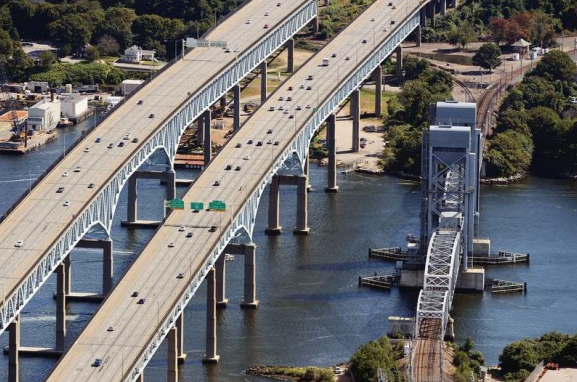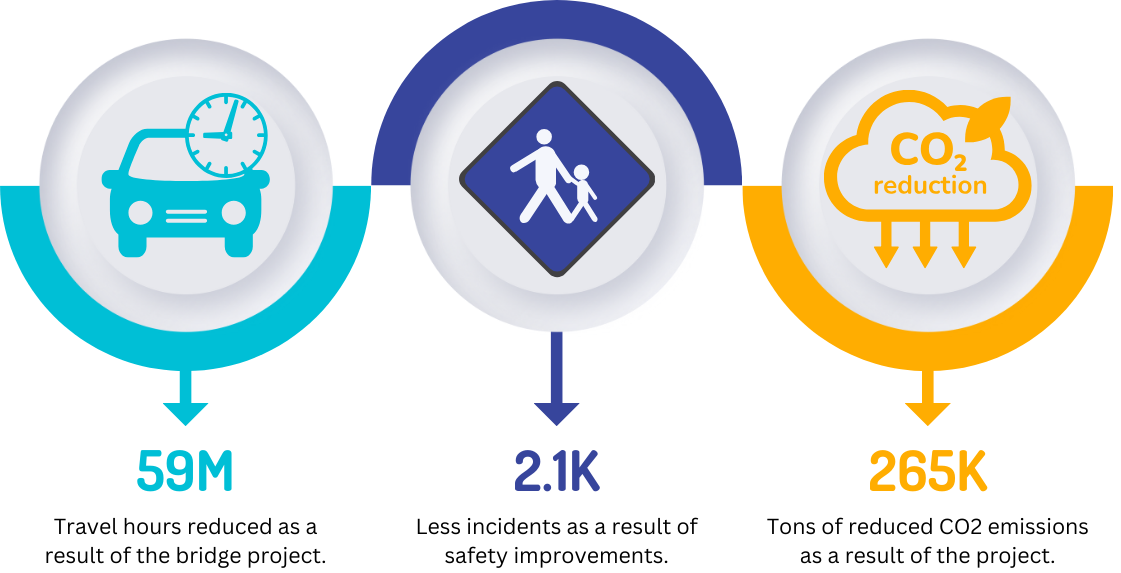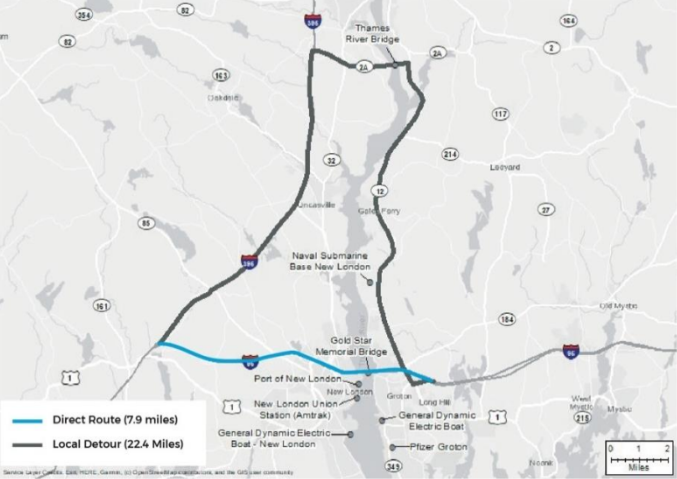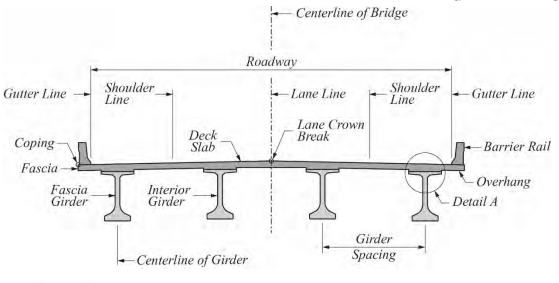Bridge Investment Program (BIP) Overview
The Bridge Investment Program (BIP) was established by the Bipartisan Infrastructure Law (BIL) to provide competitive grants to improve bridge condition and the safety, efficiency, and reliability of the movement of people and freight over bridges. Within the BIP, there are three distinct types of awards. For projects that cost more than $100M there is the Large Bridge Project grant. Projects less than $100M are eligible for the Bridge Projects grant. Additionally, there are planning grants available to conduct feasibility studies and analysis.
In December 2023, the Federal Highway Administration (FHWA) opened $9.62B through a Notice of Funding Opportunity (NOFO) for BIP FY23 – FY26. The next deadline for planning grants is October 1, 2024, while the deadline for construction projects is November 1, 2024.
Considerations for municipal leaders:
- Who has jurisdiction/control over the bridge?
- What is the role of the bridge in the local and regional transportation infrastructure network?
- What are the eligible funding sources for the bridge project?
The Gold Star Memorial Bridge Project

Project Leadership:
- Governor Ned Lamont, State of Connecticut
- Commissioner Joseph J. Giuletti, Connecticut Department of Transportation
- Mayor Michael Passero, City of New London
- Mayor Keith Hedrick, City of Groton
Location: City of New London and Groton, CT
Focus: Economic Mobility
About the Gold Start Memorial Bridge:
The Gold Star Memorial Bridge includes twin structures carrying I-95 and Route 1 northbound and southbound over the Thames River, connecting the cities of New London and Groton, Connecticut. The northbound bridge is the longest in the state, over 6,000 feet in length and 150 feet in height at the center span; together the twin spans have over 1M square feet of deck area and serve approximately 120,000 vehicle trips per day across a combined 11 lanes.
Connecticut’s State Department Of Transportation (CTDOT) received a $158.2M grant via the Bridge Investment Program (BIP) for the rehabilitation of the northbound structure of the Gold Star Memorial Bridge, a $407.7M project which began in 2020. The project consists of three phases: 1A, 1B, and 2, with the BIP award covering phases 1B and 2, while CTDOT has begun and funded Phase 1A.
Gold Star Memorial Bridge: BIP Grant
| Phase | Description | BIP | Other Federal | State | Total |
| Phase 1B Design | $4.83M | $3.86M | $0.97M | $9.66M | |
| Phase 1B Construction | Strengthen the steel of the beams that run horizontally under the bridge deck. | $62.5M | $50M | $12.5M | $125M |
| Phase 2 Design | $4.83M | $3.86M | $0.97M | $9.66M | |
| Phase 2 Construction | Replace the concrete deck across the full length of the bridge. | $86M | $68.8M | $17.2M | $172M |
| BIP Project Total | $158.2M | $126.5M | $31.6M | $316.3M* |
*$11.13M previously incurred for design and right-of-way acquisition (actual total $327.3M). This table shows future eligible expenses.
Connecticut’s State Department Of Transportation (CTDOT) received a $158.2M grant via the Bridge Investment Program (BIP) for the rehabilitation of the northbound structure of the Gold Star Memorial Bridge, a $407.7M project which began in 2020. The project consists of three phases: 1A, 1B, and 2, with the BIP award covering phases 1B and 2, while CTDOT has begun and funded Phase 1A.
Gold Star Memorial Bridge: BIP Grant
| Phase | Description | BIP | Other Federal | State | Total |
| Phase 1B Design | $4.83M | $3.86M | $0.97M | $9.66M | |
| Phase 1B Construction | Strengthen the steel of the beams that run horizontally under the bridge deck. | $62.5M | $50M | $12.5M | $125M |
| Phase 2 Design | $4.83M | $3.86M | $0.97M | $9.66M | |
| Phase 2 Construction | Replace the concrete deck across the full length of the bridge. | $86M | $68.8M | $17.2M | $172M |
| BIP Project Total | $158.2M | $126.5M | $31.6M | $316.3M* |
*$11.13M previously incurred for design and right-of-way acquisition (actual total $327.3M). This table shows future eligible expenses.

Problem to Solve
The Gold Star Memorial Bridge, one of Connecticut’s 4,362 bridges, was originally constructed in 1943. In the 80 years since its construction, it has undergone several major rehabilitation projects, the first of which was during the 1970s, and, most recently, an emergency bearing replacement in 2014. According to the American Road & Transportation Builders Association (ARTBA), the Gold Star Memorial Bridge is among the top fifteen most traveled structurally deficient bridges in Connecticut. Due to the bridge’s deteriorating condition, the bridge is load restricted, prohibiting oversize and overweight vehicles from crossing the northbound structure of the bridge (for consistency, the State applies the same restrictions to the southbound structure of the bridge). This forces freight and other heavy duty vehicles to take a lengthy detour. As the Gold Star Memorial is the only bridge across the Thames River in coastal New London County, the detour for heavy freight vehicles adds 14.5 miles with 20 signalized intersections, increasing the distance these vehicles travel and the time they spend on the road as well as adding to traffic congestion and safety concerns for local traffic. Impacted producers and contractors moving heavy equipment have to also add more trucks to maintain timely schedules in some cases. CTDOT estimates additional vehicle limitations will be necessary by 2033 without significant rehabilitation.
The detour travels through mostly residential neighborhoods in Preston, Ledyard, and Groton – passing by a pre-k through grade 2 school and a middle school. Altogether, this increases the amount of emissions from heavy duty vehicles in the communities surrounding New London and Groton, with adverse health effects on residents. By reducing vehicle miles traveled by heavy trucks, the project is estimated to reduce greenhouse gas emissions by more than 265K tons throughout the project lifecycle.
As the sole bridge crossing the Thames River in this area, it is critical to the operations of major employers including Pfizer, General Dynamics Electric Boat, the primary location for design and construction of U.S. Navy nuclear powered submarines, and Naval Submarine Base New London, both located within two miles of the bridge’s endpoint in Groton, and the U.S. Coast Guard Academy in New London. The bridge is also important to New London’s emerging offshore wind energy hub centered around the State Pier.
This project will increase the structural capacity of the bridge so that all legal, permit, and emergency vehicles can use the bridge, improving system safety, ensuring long-term performance of the bridge, and enabling the critical infrastructure component to meet regional traffic and economic development demands. The work on the northbound structure is in line with repairs and upgrades previously performed on the Gold Star Memorial Bridge’s Southbound structure.
Due to the current load restrictions and size of the project, CTDOT is prioritizing rehabilitation work on the bridge, pursuing an aggressive schedule to prevent further deterioration and to strengthen the bridge for heavier loads requiring a permit.

In addition to improving the structural integrity of the bridge, funds will be used to develop a new 8-foot-wide multi-use path for pedestrians and bicycles. A recent feasibility study by the Southeastern Connecticut Council of Governments (SCCOG) found that approximately 6,500 local residents commute entirely by walking or biking. The multi-use path will connect existing bike and pedestrian paths on both sides of the Thames River, providing an opportunity to integrate bike-sharing and other micro-transit options in the area. To ensure inclusivity, the Connecticut Department of Transportation (CTDOT) will meet ADA criteria in constructing the path. The path also promotes equity as it enhances active transportation options in a low-income area where many households od not have personal vehicles. The multi-use path will enhance active transportation options in a low-income area where many households do not have personal vehicles.
Development
The overall project is to be broken into three phases: 1A, 1B, and 2. Phase 1A has already begun construction and is not included in the BIP grant award. Phases 1B and 2 of the project, funded by this award, have an anticipated construction start date in Q2 2025, with an anticipated completion date in Q3 of 2029.
The BIP award is supporting Phases 1B and 2, Phase 1B will strengthen the steel on the approach girder spans’ superstructure on both ends of the bridge, and Phase 2 will replace the concrete deck across the full length of the bridge.

TCTDOT’s benefit-cost analysis for the three phase rehabilitation estimates that for each dollar spent in project costs, approximately $1.95 worth of benefits will be generated by the improvements. These are largely due to travel time savings valued at $309M and safety benefits valued at $80M. Over the project lifecycle, the improvements will prevent 2,136 traffic incidents – including 12 fatal crashes and nearly 500 injury crashes. The project will also upgrade lighting beneath the bridge, improving marine vessel safety. Other expected benefits include reduced noise pollution in residential neighborhoods, improved health and active transportation network, avoided congestion, improved safety for all users, and reduced emissions from heavy duty vehicles.
The project will also deploy Accelerated Bridge Construction in Phase 2 using materials that will allow for a thinner deck layer, reducing deadweight on the bridge, strengthening the substructure, and allowing the heavy overload and freight vehicles to once again traverse the northbound bridge. The BIP grant award and the use of innovative construction methods will reduce the construction timeline by a year.
Local Engagement & Community Impact
Local Engagement
Connecticut is unique in that the state does not have county governments. As a result, New London and Groton have been working through their local Council of Government to advocate and facilitate local engagement for the Gold Star Memorial Bridge project. The Southeast Connecticut Council of Government represents 22 municipalities, including Groton and New London. In addition to the local-state partnership, CTDOT is also emphasizing the importance of engagement with local residents too, as Josh Morgan, CTDOT’s Director of Communications, said “yes you need the council, yes you need the local officials, but you also need the average resident.” In a webinar with the Local Infrastructure Hub, Mayor Passero noted that the city is leading in the public engagement processes for the project.
Community Impact
The Gold Star Memorial Bridge is but one example among so many of how vitally important it [maintaining infrastructure] truly is. With tens of thousands of daily commuters and locally important jobs hanging in the balance at locations like Electric Boat and the Naval Base, and critically important access to the State Pier and the potential growth of jobs in the emerging off-shore wind industry, we need to keep these investments moving forward to protect our economic future. – Mayor Michael Passero, New London (2019)
The rehabilitation of the Gold Star Memorial Bridge will positively impact the local communities in many ways. In addition to supporting legacy employers in the area, the bridge rehabilitation project will also support Connecticut’s emerging offshore wind industry particularly at State Pier Terminal.
At the Connecticut Port Authority’s State Pier Terminal in the Port of New London, the State and Port authority, with the offshore wind development joint venture of Ørsted and Eversource, have invested $310M to improve the terminal’s infrastructure allowing it to serve as a Wind Energy Hub. The State Pier Terminal is the only active East Coast offshore wind marshaling terminal with unobstructed access to the ocean. The Gold Star Memorial Bridge will serve as a key link for existing and future employees who will be based at the State Pier to help with construction of the upgraded port facility and work to maintain the wind farm in the years after.
Regardless of your mode of transportation, it’s about getting from point A to point B safely. – Josh Morgan, Director of Communications, CTDOT
Project Funding
While all three phases of the Northbound rehabilitation project total $407.7M, this grant award goes specifically toward phases 1B and 2 with project costs totalling $327.3M. The BIP grant is for $158.2M – 50% of Phase 1B and 2 project costs – with the remaining 50% is made up of $31.6M in bonds from CTDOT and $126.5M from the National Highway Performance Program formula funds. . The State DOT is providing $74.7M for the first phase (1A) of the project via state transportation bonds. While the BIP grant can only cover up to 50% of the project cost, the total federal share for the award can go up to 80 or 90 percent depending on whether the bridge is classified as on or off system (detailed in the December 2023 NOFO).
|
National Highway Performance Program (NHPP) The NHPP, a formula program, was established in 2012 and renewed through the passage of the IIJA to provide support for the construction of new facilities on the National Highway System. To permit flexibility and adaptation, the IIJA allows states to transfer up to 50% of NHPP funds to make infrastructure investment choices based on their most pressing preservation needs. For FY 2024, Connecticut received $364.93M from the National Highway Performance Program. |
Conclusion
The Gold Star Memorial Bridge, carrying I-95 across the Thames River, is a critical component to the regional transportation network. Without investment in rehabilitation, heavy duty vehicles, and eventually a wider set of vehicles, will be forced to take a lengthy detour – generating more greenhouse gas emissions in communities, creating safety hazards, and increasing congestion on local streets. Furthermore, the potential impacts of a no-build decision are clear, with implications for current manufacturers, employers, and the emerging offshore wind hub. With funding support from the BIL, CTDOT is working with New London and Groton to advance this project that will strengthen nationally significant infrastructure and provide local benefits in the multi-use path and by reducing greenhouse gas emissions caused by the detour.
Accelerator for America would like to thank Drexel University Nowak Metro Finance Lab for their partnership in production of this case story for the Local Infrastructure Hub.



